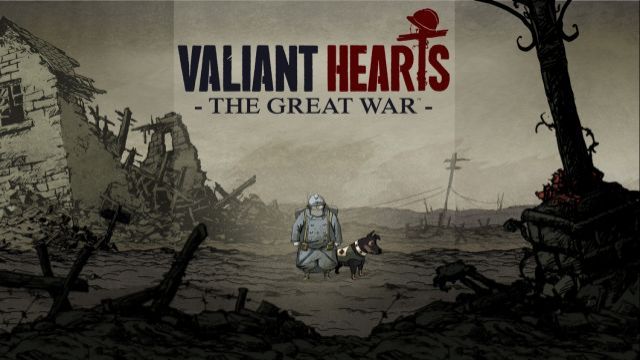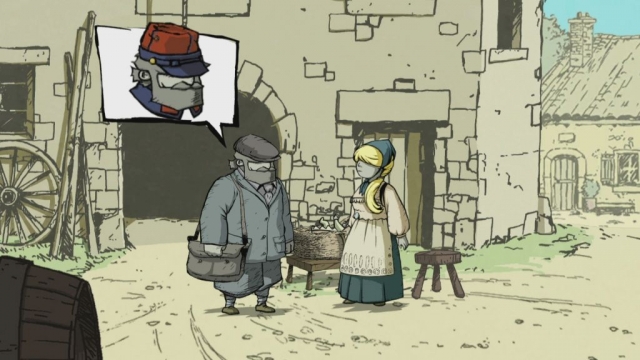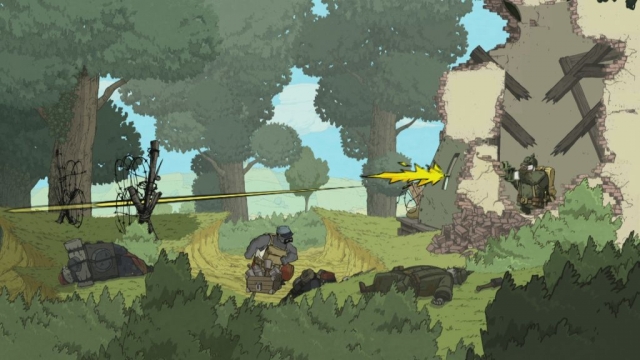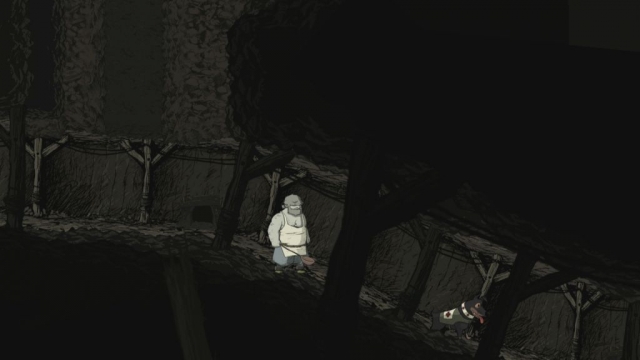Valiant Hearts: The Great War

Ubisoft is riding a wave of momentum with their incredible UbiArt engine as both Rayman games that have used it and the more recent Child of Light showcase a level of beauty rarely seen in gaming. Now, Valiant Hearts brings the engine into deeper waters than even Child of Light did by crafting a compelling plot within the trappings of a puzzle/platformer/adventure game. Normally, this kind of game can be tricky for me, but I decided to take a gamble on it since the storyline seemed so interesting.
With its story inspired by actual letters written during World War I, Valiant Hearts sinks its dramatic hooks in early on and never lets them out of your flesh. Child of Light took the UbiArt engine into the realm of the fairy tale, while this tells a fairly grim story about World War I in a way that may not bring tears, but will illicit concern for the characters. You’ve got a pair of soldiers on opposite ends of the war in theory, but they’re so like-minded that their opposing of one another is simply due to location. There’s also a young mother worried about her father and grandfather as they fight, while she’s stuck in France being removed from the farm she calls home.
Valiant Hearts’s best element is the storytelling, which remains gripping even with the characters lacking traditional dialogue and the character you see more than any of them being a dog. He kind of plays the role of a large fly on the wall – seeing everything in the war, but being much easier to root for since he’s so vulnerable as a relatively small creature around a warzone at all times. The core gameplay bears a striking resemblance to The Lost Vikings, with each playable character having their own special skills. One is handy for removing barb wire, while another can dig through dirt to get to a new area – or even find hidden goodies.
Each little trinket you find will unlock more real-life WW I trivia and facts. Photos and information are provided, and while nothing here is going to replace a well-sourced Wikipedia entry or textbook, seeing so much background information on the war gives the game a level of credibility all other history-inspired games lack. The photos in particular ground you in the war, so even as you’re digging through dirt and moving a dog around to solve puzzles, you’re always reminded of the fact that what happened was quite real and had severe consequences. It never hurts to have a reminder that war is in fact Hell on Earth, and the past decade+ of war coverage has made it very easy to view a war as purely a political issue and dehumanize the people fighting it.
While things resemble The Lost Vikings on a surface level, the puzzles here never involve playing as more than one character at a time and they’re much easier to solve. Generally, you need to use one character’s superior guile or brute strength to progress, and make proper use of the dog to help move levers and duck underneath things. It’s a simple system, but it works. Everything is screen-based, so you know right off the bat that you’ll only need to go one or maybe two screens over to find all of the tools needed to complete the puzzle and if you struggle, you can bring up a hint after a small waiting time. This does make the game very easy, but I don’t mind it all that much – this structure allows the story to flow more naturally and prevents frustration from setting in for a prolonged period of time. As a result, if you really love the brain-teasing part of puzzle-platformers, you’re probably going to be underwhelmed. If you’re like me though and love the setting and atmosphere of a game like Braid, but don’t like the puzzle aspects as much, then you’ll love this approach.
Visually, Valiant Hearts is the least jaw-dropping UbiArt game so far. While it’s certainly appealing to the eyes, the use of such thick black lines means it’s got a really cartoony look and there isn’t a lot of color on-screen most of the time either. While this makes sense given the wartime setting, it does hurt the look of the game as a whole. One upside to this is that when there is a lot of color, it leads to a feeling of accomplishment and joy. You spend so much time in bleak surroundings that even the mere sight of a ray of sunlight gives you hope that the next adventure will go your way. Character animation is limited, but it works for the look of everything and doesn’t come off as having any corners cut – it’s clearly part of the vision for the game.
Without the use of proper voice acting, Valiant Hearts winds up making you care about the characters through their rapid speech. Despite nothing quite sounding like a proper language, you can still tell the tone of the conversations – much like how Brothers: A Tale of Two Sons did the same thing. The soundtrack is full of both dramatic and campy songs. You’ve got a mix of French stereotype songs, German ones, and alongside that, you get really epic songs – like what’s been used in trailers, that bring the horrors of war to life the second you hear them.
Valiant Hearts’s low barrier of entry difficulty-wise makes it a perfect gateway game for those who don’t usually enjoy the genre. While the puzzles are simplistic, they’re also fun to solve and never get in the way of the interesting storyline going on. It’s not the best-looking UbiArt game so far, but does blend a colorful world with a dark, somber one fairly well. The inclusion of historical facts and photos is a little touch that adds a lot to the experience, and anyone who is fascinated by history, loves the UbiArt engine, or enjoys puzzle-platforms will enjoy their time with Valiant Hearts.
Reviewed By: Jeremy Peeples
Publisher: Ubisoft
Rating: 85%
——————————————————————————–
This review is based on a digital copy of Valiant Hearts: The Great War for the PlayStation 4 provided by Ubisoft.
 Game Over Online
Game Over Online





















